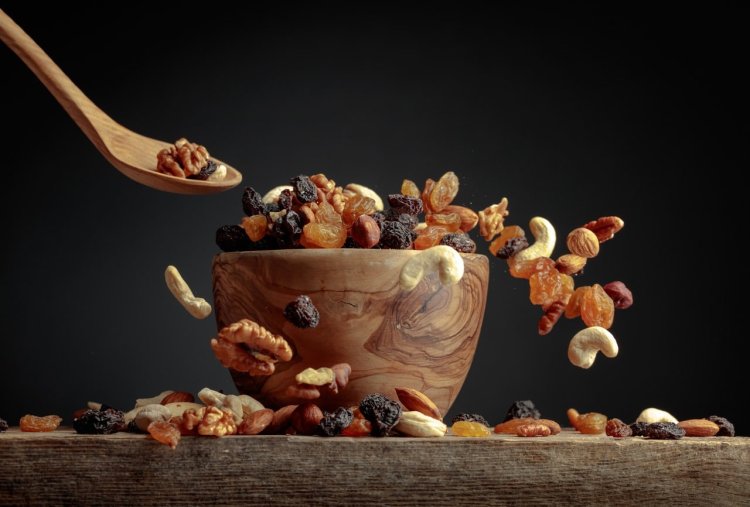Can You Eat Dried Fruit If You Have Diabetes?
Individuals with diabetes can consume dried fruit in moderation due to its concentrated sugars. Monitoring portion sizes and managing carbohydrate intake is essential to maintain blood sugar levels.

According to the most recent National Diabetes Statistics Report, 11.3% of the US population (or 37.3 million individuals) has diabetes, and 38% of adults (or 96 million people) over the age of 18 have prediabetes. Given these figures, it's critical for a diabetic (or prediabetic) to understand how the items they eat affect their blood sugar levels.
Dried fruit is a typical food that diabetics may ask if they can eat (along with other carbohydrate-based meals such as bananas, potatoes, and pasta, of course). Unlike fresh fruits, dried fruits have had the majority of their water content removed, resulting in a compact, highly concentrated source of nourishment. Fresh and dried fruits both provide significant nutrients for your diet, but nutritionally comparing them is like comparing apples to oranges. A cup of grapes, for example, weighs around 92 grammes and contains 16 grammes of carbohydrates, whereas a cup of raisins (dry grapes) weighs about 165 grammes and contains 130 grammes of carbohydrates. As you can see, comparing fresh to dried fruit in terms of portion size just does not work.
While dried fruits have a place in the diet, it's crucial to learn how to incorporate them into a well-balanced diet to avoid blood sugar rises. But don't worry, we've asked the professionals how to do it so that you may be confident in your food selections.
The Effects of Dried Fruit on Blood Sugar
When you eat anything, including dried fruits, the sugars or carbs in the meal are broken down and released into your bloodstream as glucose molecules. These chemicals help to fuel and deliver energy to your body. When a person without diabetes consumes carbohydrates, the pancreas secretes the hormone insulin to aid in the transit, storage, and/or utilisation of glucose. A diabetic is unable to generate or use insulin adequately, necessitating the use of medicine to assist manage their blood sugar levels. Similarly, someone with diabetes must carefully manage their carbohydrate intake in order to properly dosage their insulin to keep their blood sugar in balance.
While all people, including those with diabetes, should and should consume carbs as part of a balanced diet, certain carbohydrate-based items, like dried fruit, cause blood glucose to rise more quickly.
"A person living with type 2 diabetes can eat a variety of foods," says certified diabetes educator Kim Rose, RDN, CDCES, CNSC, LD. However, certain foods may have a greater impact on blood glucose levels than others, and dried fruit may be one of them. Despite the fact that dried fruit provides vitamins, minerals, fibre, and antioxidants, diabetics should be worried about their blood glucose levels. Be wary with portion sizes, as 1 cup of dried fruit can significantly raise blood glucose levels compared to 1 tablespoon."
Erin Palinski-Wade, RD, CDCES, author of 2 Day Diabetes Diet in New Jersey, agrees with Rose that a varied diet is essential for controlling diabetes. According to Palinski-Wade, "portion size, fibre content, and what the food is eaten in combination with all impact the extent to which blood sugar will rise after consumption.
Nutrition of Dried Fruit
While there are many dried fruits to pick from, they are not all created equal. Palinski-Wade suggests picking dried fruits with a higher fibre content since fibre slows digestion and thus has a lower impact on blood glucose levels.
Palinski-Wade's top picks because of their fibre content are:
Apricots
- (40g, 4–5 dried apricots)
- 100 kilocalories
- Carbohydrates (25g)
- 22g of sugar, 3g of fibre, 1g of protein, 1mg of iron, and 13mg of magnesium
- potassium 464mg
Dates
- (4 dried dates, 40 g)
- 110 kilocalories
- 30 grammes of carbs
- 25g sugar, 3g fibre, 1g protein, and 0.5mg iron and 17mg magnesium
- potassium 262mg
Figs
- (40 g, 3–5 dried figs)
- 110 kilocalories
- 26g carbs, 19g sugar, 4g fibre, 1g protein, 0.8mg iron, 27mg magnesium
- Potassium 272mg
Prunes
- (40 g, approximately 4 to 5 prunes)
- 100 kilocalories
- carbs (26g)
- 3g fibre, 15g sugar
- 1 gramme protein, 0.4 milligramme iron, and 16 milligramme magnesium
- Potassium 293mg
The Advantages of Eating Dried Fruit Could Improve Diet Quality
A recent 2021 cross-sectional study published in the Journal of the Academy of Nutrition and Dietetics discovered that people who ate dried fruits had superior diet quality and higher intakes of underutilised nutrients than those who did not. Given that potassium has been identified as a dietary nutrient of public health concern by the 2020-2025 Dietary Guidelines for Americans, it is critical to focus on potassium-containing foods such as dried fruits to help boost dietary intake levels. Having said that, the study also discovered that people who ate dried fruit had greater calorie consumption levels on days when they ate dried fruit. As a result, it's critical to follow Rose and Palinski-Wade's advise and keep quantities and overall diet quality in mind throughout the week.
Bone loss may be avoided.
A study published in the American Journal of Clinical Nutrition in 2022 discovered that eating five to six prunes per day (approximately 50 grammes) for six months can prevent bone mineral density loss in postmenopausal women, potentially lowering their risk of hip fractures. The benefits were extended when individuals ingested the dried plums for a year, making this dried fruit a potential simple, nonpharmacologic treatment for bone loss. Palinski-Wade emphasises that this is especially crucial for diabetics because diabetes increases one's chance of getting osteoporosis.
What to Look for When Choosing the Best Dried Fruit for Diabetes
Examine the Nutrition Facts panel for sugar content. The "added sugars" label should read 0 grammes. You can also check the ingredients to confirm that only preservatives are used to keep the product fresh, rather than sucrose, high-fructose corn syrup, or another additional sugar source.

What Should Be Included?
Rose suggests including a varied diet to obtain the best benefits and fulfil your demands. Look for no-added-sugar dried fruit trail mix in single portions that are easy to drop in your bag for a portable, balanced snack. The protein and fat in the nuts and seeds in these combo snacks will also help reduce the blood sugar spike that would occur if you only ate a container of dried fruit.
What Should Be Restricted?
Limit the amount of dried fruit you eat in one sitting or throughout the day, even if it is sugar-free. Be wary of trail mixes containing chocolates, yogurt-covered raisins, or honey-sweetened peanuts, as they may have more added sugar than you realise.
Tips for Including Dried Fruit in a Diabetes-Friendly Diet
To aid decrease absorption and reduce blood sugar spikes, combine dried fruit with a healthy fat, protein, and fibre source. Rose suggests nuts, nut butter, and cheese as excellent pairing meals.
Limit your intake of dried fruits with added sugars. On the label, look for options with natural sugar sources and 0 grammes of added sugar.
Exercise portion control. A spoonful or two can go a long way towards satisfying a sweet taste organically.

:max_bytes(150000):strip_icc():format(webp)/Can-You-Eat-Dried-Fruit-If-You-Have-Diabetes-cfc60ec43da84d9aa76b4cfc7462c8d6.jpg)











